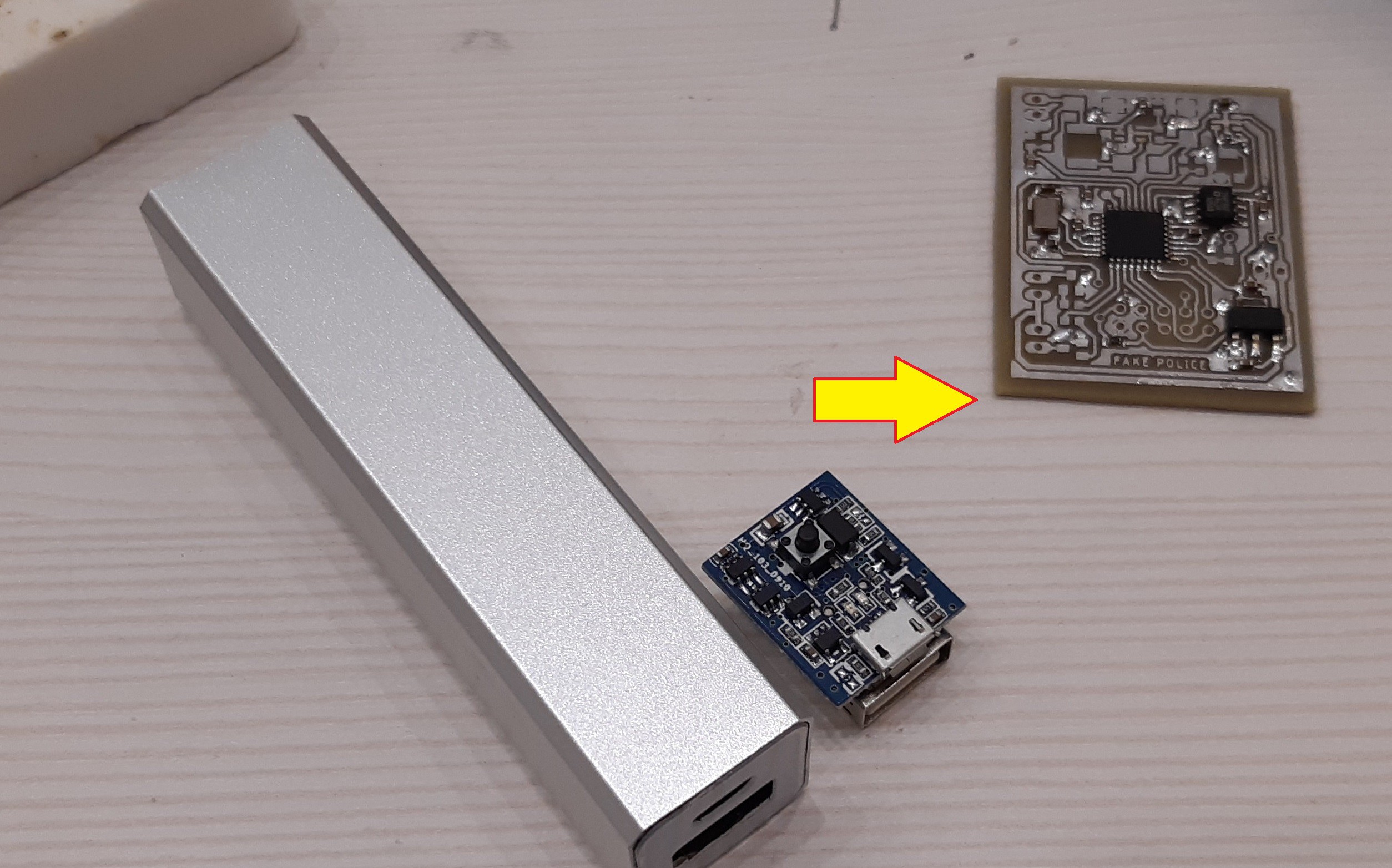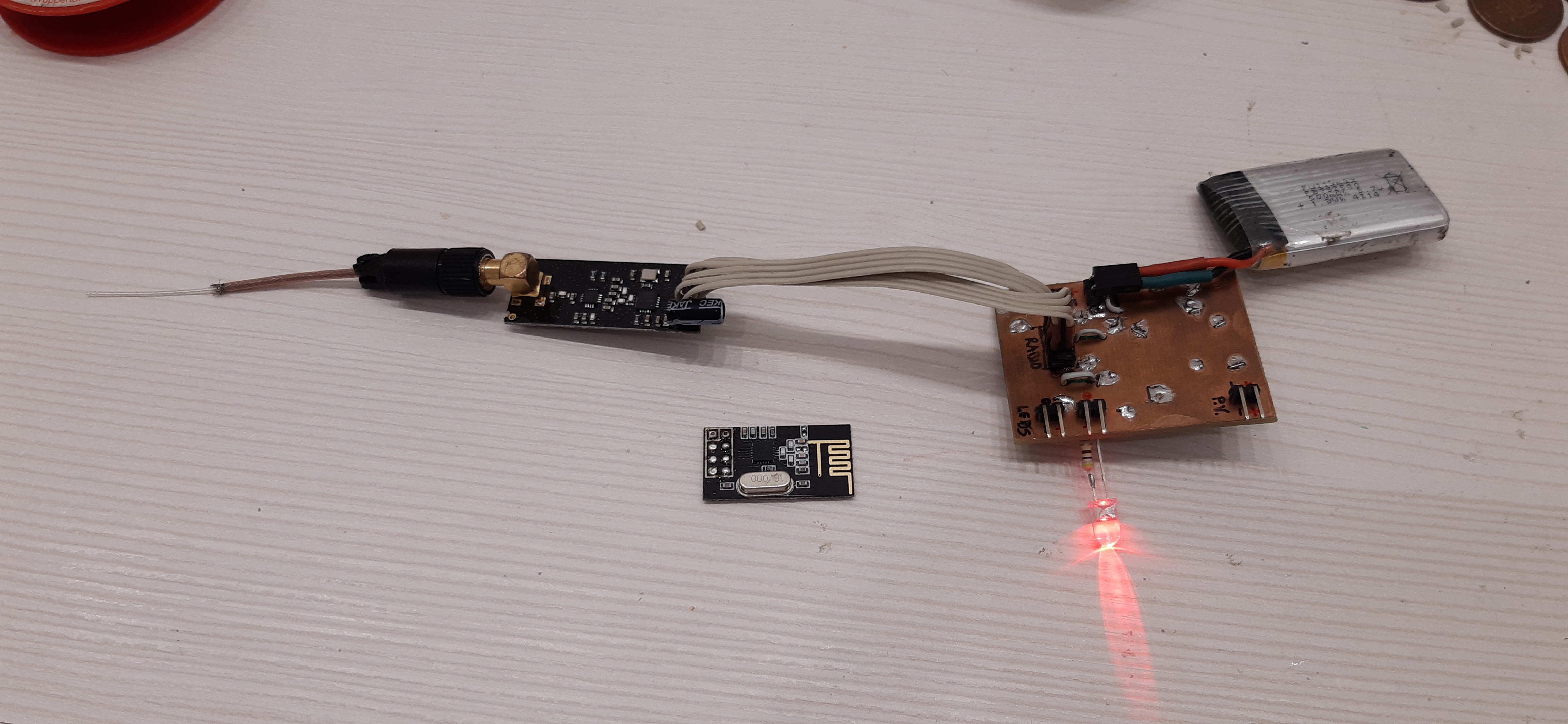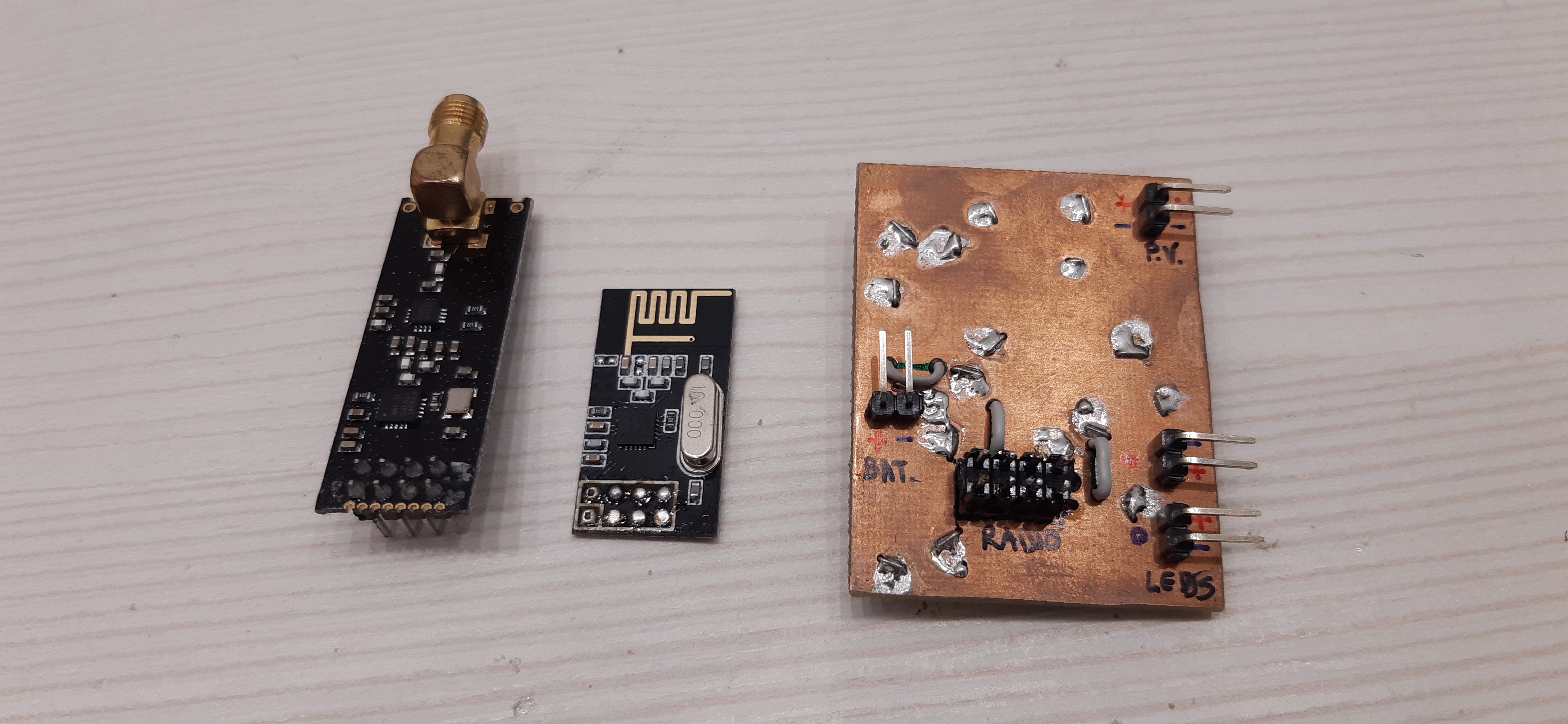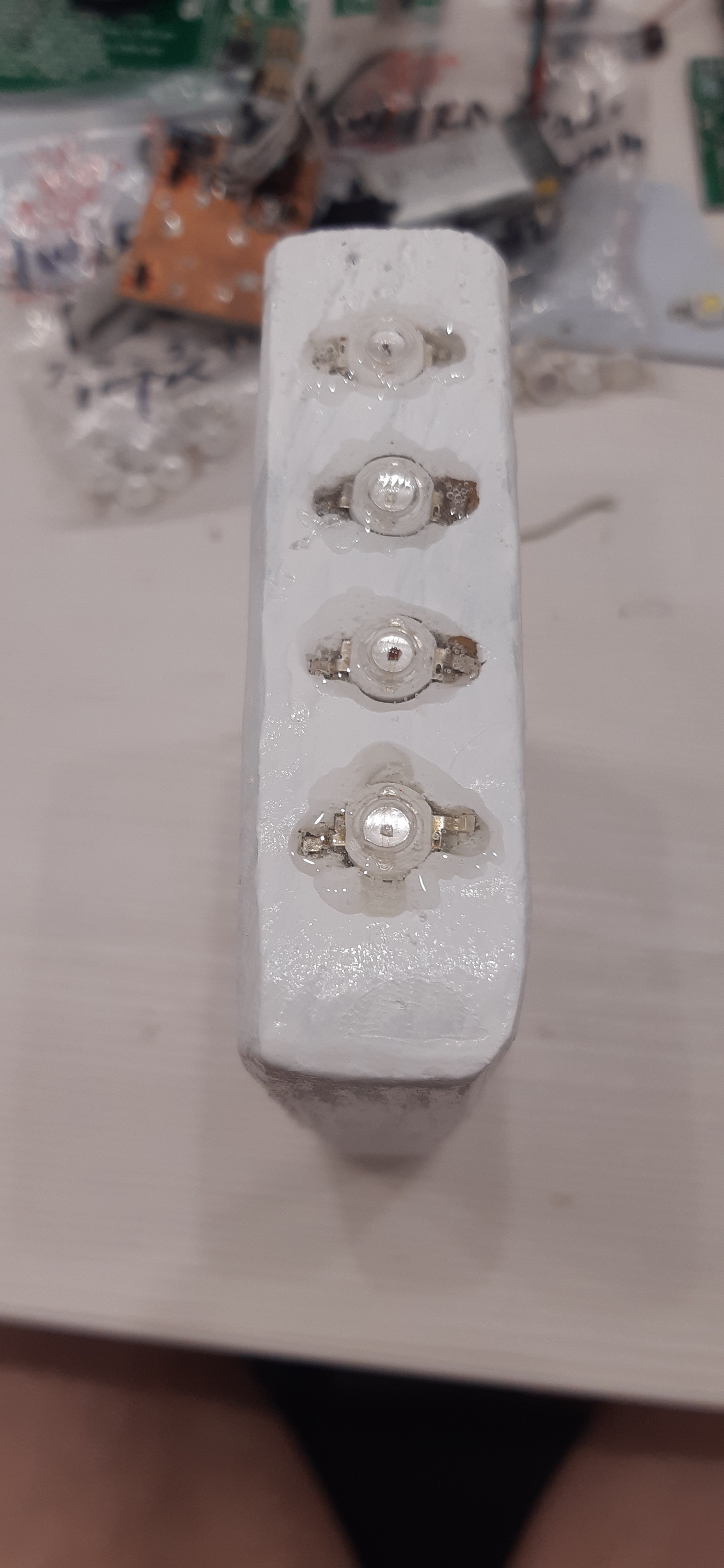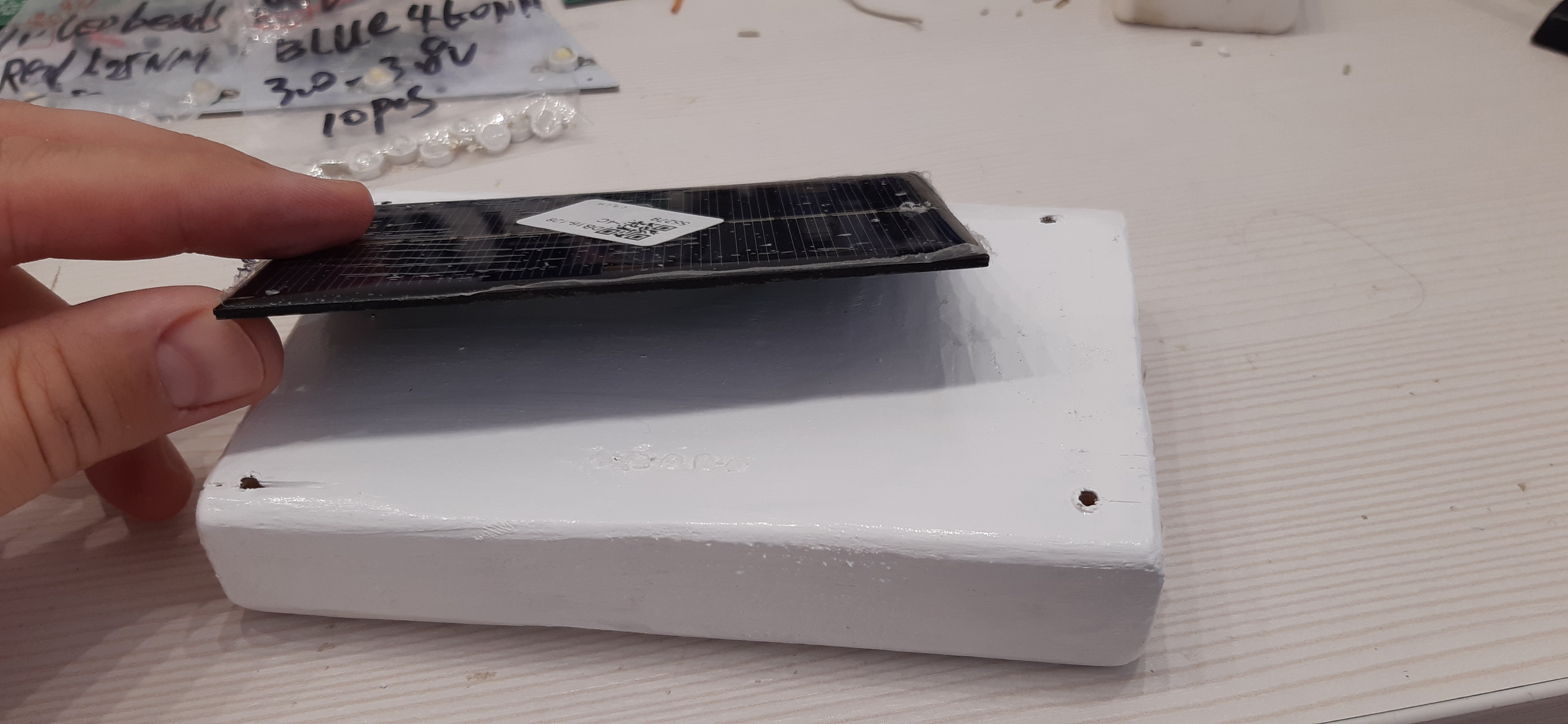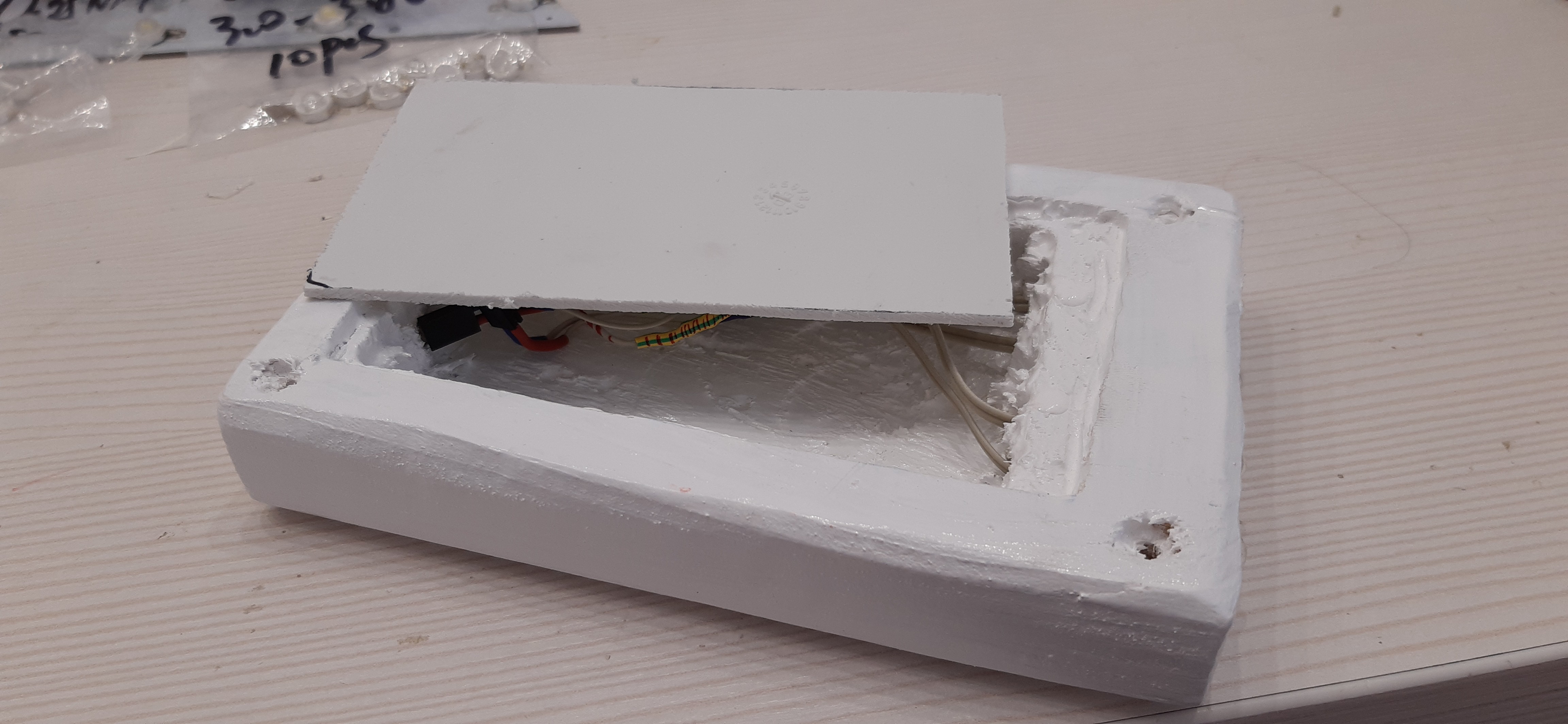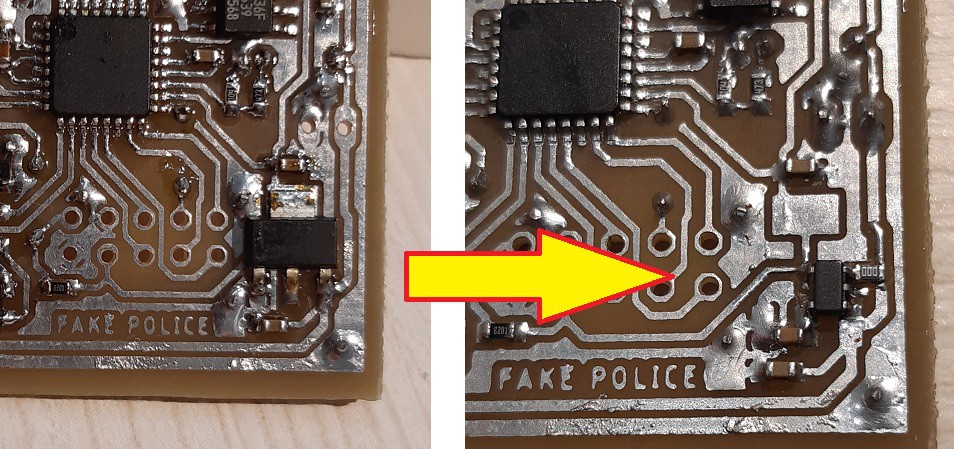What is it? - It is a "deploy and forget" device, solar powered, hacked with mostly re-used components from previous projects and other donor devices. Basically it is a *special* LED blinker.
There are three modes of operation:
- simulate police car lights
- simulate speed radar flash
- sleep mode
The RF transmission is *protected* by none other than KeeLoq.
This project consists of two parts:- The device, deployed remotely
- The controller, at home
The nature of the project is most probably short-lived. That is because once it is revealed to the "general public" it will simply be ignored by those for whome it is designed to scare.
It would be just like telling the crows that a scare-crow is nothing to worry about.
This all means that a smart usage of this device is paramount if I want it to last.
For the controller part I have chosen to use Raspberry Pi, because I don't have the time/energy to build a nRF24L01 key-fob (which would be ideal for this project) and because I have a pi-hat from my previous project that I can re-use for this purpose.
Be sure to read Project Logs for all the details.
 trax
trax